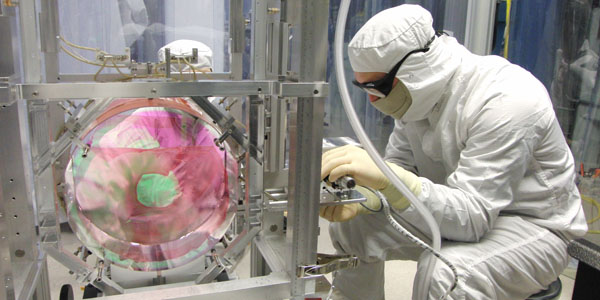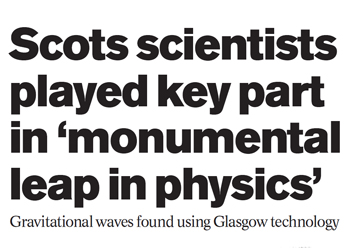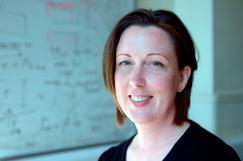UofG rides gravitational wave
Published: 16 February 2016
The historic detection of gravitational waves gave the University of Glasgow global media coverage.
The historic detection of gravitational waves gave the University of Glasgow global media coverage.
Last week's announcement, made from Washington DC but coordinated around the world, grabbed headlines and led TV news bulletins. It also gave the UofG record-breaking exposure on social media, engaging two million people and including nearly 400,000 views of a video produced by the University's media team.
To see a selection of the social media coverage visit UofGlasgow Storify
University of Glasgow researchers had been working for decades to support the worldwide effort to detect gravitational waves, and co-led the group inside the collaboration which detected the gravitational wave signal.

Scientists from the University’s Institute for Gravitational Research led on the conception, development, construction and installation of sensitive mirror suspensions in the heart of the LIGO detectors in Livingston and Hanford, which were crucial to the first detection. That technology, developed in partnership with the University of Birmingham, the University of Strathclyde, and the STFC Rutherford Appleton Laboratory, was based on Glasgow’s pioneering work for UK/German GEO600 detector.

Last Thursday afternoon a major media briefing was held in the Senate Room which was packed for the announcement. Those attending were able to watch the US live stream of the Washington event and then got more information about the UofG's substantial role in the breakthrough.
Professor Sheila Rowan, Director of the Institute for Gravitational Research, appeared on TV and Radio on nearly all the channels.
The Glasgow team featured in the main story on the BBC's UK national evening news bulletins. The University of Glasgow grabbed acres of newsprint coverage on Friday morning, the day after the announcement.
Social Media
The Facebook video was 'liked' by more than 10,000 people. The UofG Twitter feed enjoyed more than half a million 'impressions' with more than 1,300 retweets. Our Chinese social media channels got heavy traffic with comments, likes and re-posts on Sina Weibo and 46,716 'article views' on WeChat.
 The breakthrough was hailed by Scotland’s First Minister, Nicola Sturgeon, who said: “This is a world leading discovery that again puts Scotland at the forefront of science.
The breakthrough was hailed by Scotland’s First Minister, Nicola Sturgeon, who said: “This is a world leading discovery that again puts Scotland at the forefront of science.
“The University of Glasgow’s decades-long commitment to gravitational wave research is admirable, and this first detection is an impressive testament to the dedication, innovation and collaborative spirit of the scientists who work there.
“I’m pleased and proud that scientists from Scottish universities played a key role in the worldwide effort to prove that Einstein’s prediction of the existence of gravitational waves was correct.”
'Extraordinary day for University'
Professor Anton Muscatelli, Principal and Vice-Chancellor of the University of Glasgow, said: “This is an extraordinary day for the University. All of us are immensely proud of the work done by Professor Sheila Rowan and her colleagues in the Institute for Gravitational Research and the School of Physics and Astronomy.
"I know what a marvellous day this is for our colleagues who have devoted so much of their careers to this mission. It is truly world changing stuff! Their major role in the detection of gravitational waves will stand alongside the achievements of our great, scientific alumni: Joseph Black, James Watt, John Logie Baird, William Rankine, Jocelyn Bell Burnell and so many more.
"In providing final proof of Albert Einstein’s theories, an honorary graduate of this University, the discovery of gravitational waves will open up new possibilities for understanding the universe and those beyond our own. I’m sure I speak for all of us at the University in sending our congratulations and admiration to our colleagues in the Institute.”
For more information visit Gravitational Waves
First published: 16 February 2016
<< February

